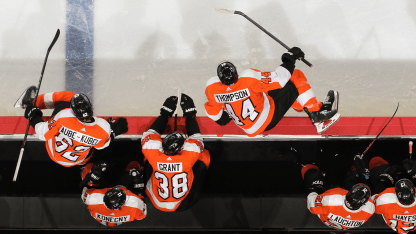For one thing, when spread out across full games, it means more ability for to roll lines.Last season, the Flyers forward corps averaged 18.2 shifts per game (led by Sean Couturier's 26.8 with 8 averaging 20+). This year, 10 Flyers have averaged 20+ shifts and 13 players have averaged 19+ minutes. In 2018-19, the Flyers had 8 forwards average 14+ minutes TOI. This season, 10 different Flyers forwards have averaged at least 14 minutes of ice time.

